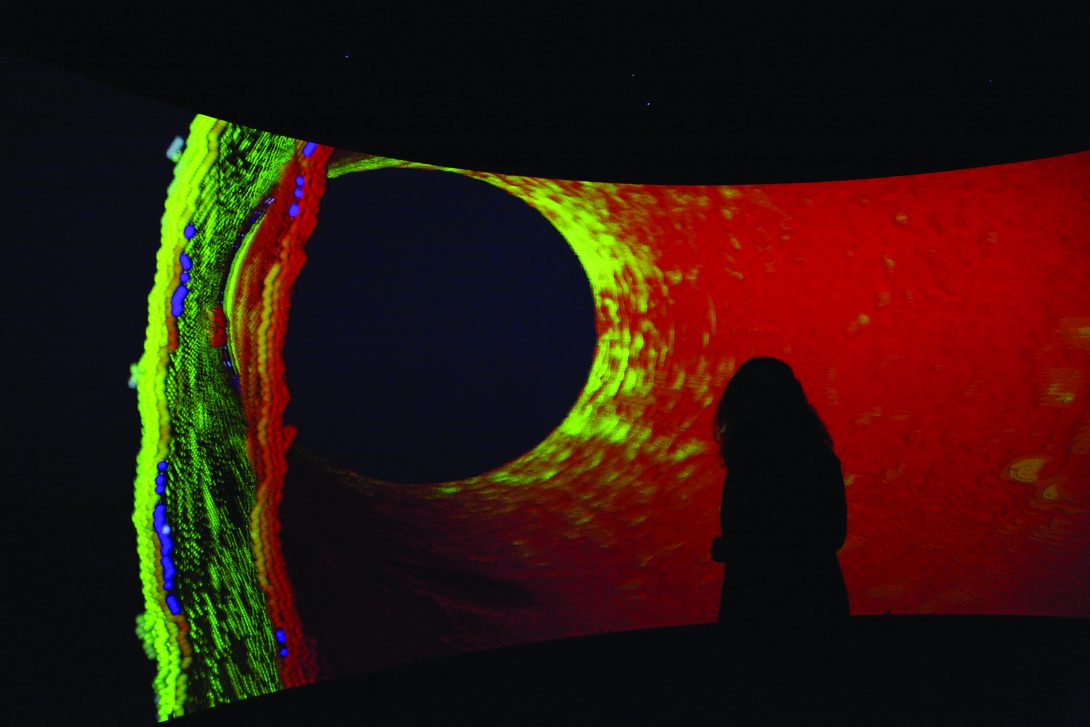
Sydney Water Pipe
Background
The Research Project
This project is a collaborative effort between UTS, Monash and the University of Newcastle.
Some of Sydney’s water pipes are over 100 years old, they’re cast iron and they’re corroding – because that’s usually what happens when you put iron under ground!
The data set which comprises this visualisation contains 36 million individual points. This data was collected using a LIDAR laser scanner. The Data Arena is able to handle such large data sets with ease – users are able to view and interactively navigate the point cloud in real time.
Technicians are able to make use of this visualisation to examine the thickness of the pipe segment at different points. The segment shown in the image above is a portion of pipe that developed a serious leak, due to gradual corrosion and the pressure of the water inside.
This project deals with the water pipes that carry drinking water for Sydney’s residents. The researchers sought to analyse the data that is currently being used to monitor and inspect these pipes using various techniques in order to be able to more reliably identify damaged segments of water pipe before they break and start to leak.
The water pipes examined in this project were actually taken out of the ground and then inspected with very high definition 3D lasers that generate point cloud data sets containing millions of individual samples. Dealing with such a large data set can be very challenging, so the idea behind this visualisation was to manipulate and represent the data in a manner that allowed technicians to easily find the crevices and holes that they were looking for.
The colours that you see in this particular example provide a visual indication of the thickness of the water pipe in each location. Red coloration indicates that the wall of the pipe is thinning due to rust and corrosion, the yellow coloration highlights regions which are still relatively thick. Thin sections of piping are more likely to develop cracks or holes – eventually the water pipe will not be able to withstand the pressure of the water inside and it will fracture and break.





